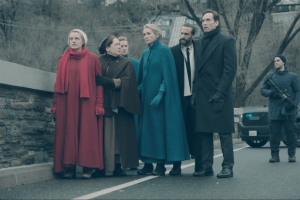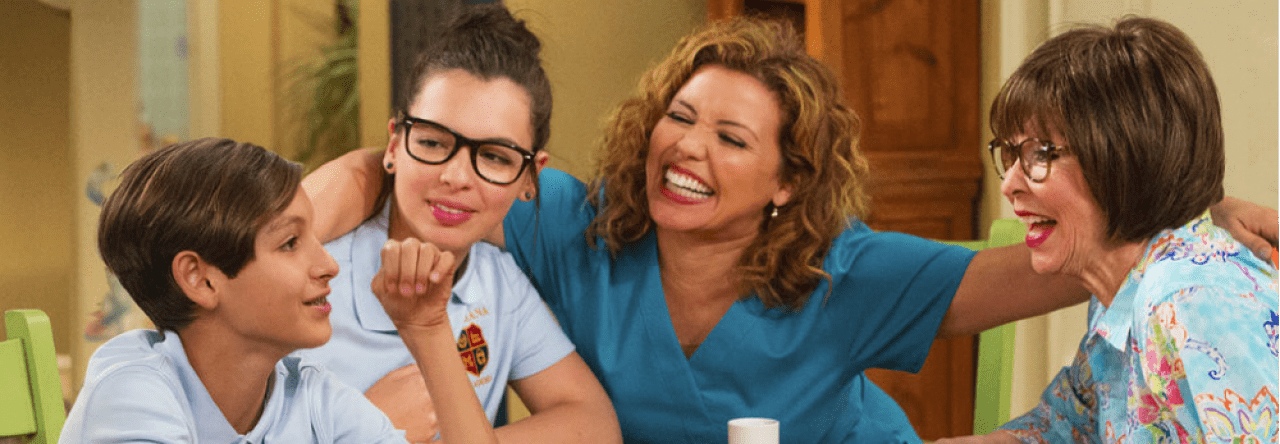Wow, it’s so blue. Both metaphorically and physically. That was the first thing I noticed about The Handmaid’s Tale. The show begins in a whirlwind, with a woman, later known to be June, running away with her child and husband. In an instant, the cinematography built immense tension and already had me on the edge of my seat, waiting to see what would happen.
The beginning of the show is definitely confusing. Is this the US? Is it the future or past? What are they wearing? What’s going on? The show is mostly chronological, and it gives very little backstory all at once. Instead, the directors incorporated the use of flashbacks to fill in the gaps yet make you more confused all at once. The transitions between the present and the flashbacks of the past are always very jarring. You see June and Moira enjoying a run one morning and standing up to sexist barista, then the next thing you know, June is sitting silently while the world beats her up. The sexist barista represented the slow shifting of society, which clears things up. But also, it makes you wonder what was the last straw, what made society snap?
Another thing I noticed was the use of a blurry background, or sometimes foreground, in the shots. To me, this conveyed isolation and the unknown, like women weren’t allowed to “see” what was going on around them. Physically, this could be shown by the Handmaids’ wings, a bonnet-like hat that covered the sides of their faces, preventing them from seeing out and others from seeing in.

The blue filter over the whole show makes June/Offred’s characters stand out above the rest and exemplifies societal divisions.
Speaking of clothes, the colors each social group wore added to the visuals and expressed the hierarchy and contrasts the overall color scheme. As I mentioned, the show is very blue, which of course creates a depressing mood. However, blue is also a very calm color, and this society seems to revolve around passive aggressive but calm tension. The Wives wear blue, the Marthas wear green, and the Handmaids wear an especially contrasting red. Red is often seen as a provocative color, and this labels them as whores and outcasts them from society.
Unlike books, where the words must convey visuals that each individual puts together in their head, TV shows rely on visuals to convey emotion- this is what a good show does. And The Handmaid’s Tale does just that.

Comments are closed.